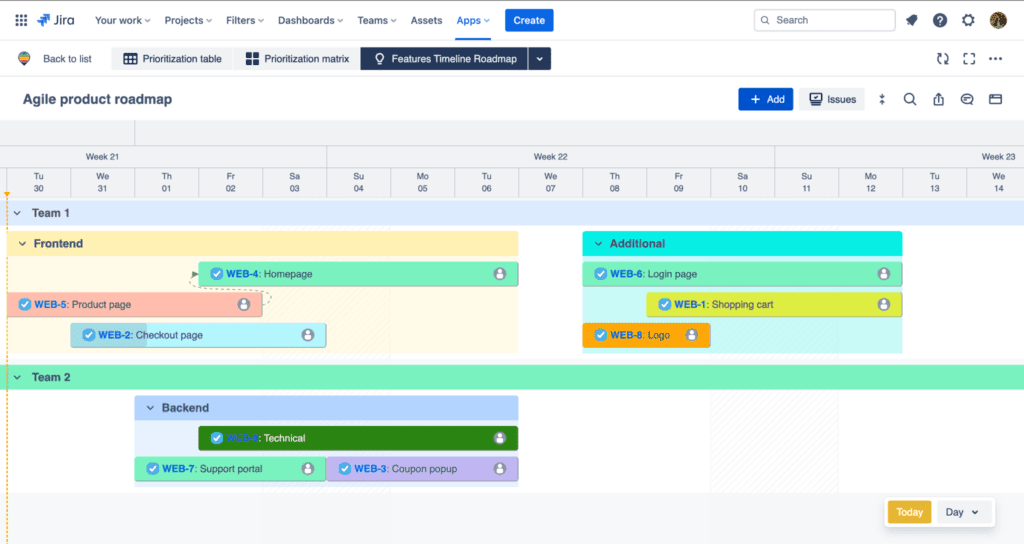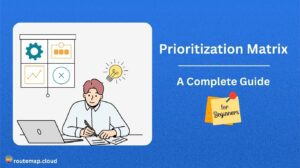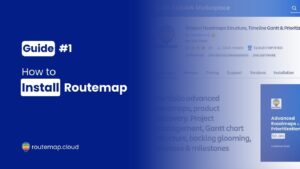An agile product roadmap is crucial to any product development process, especially in an agile environment. Unfortunately, it can be challenging to develop an effective product roadmap
But worry not. Whether you are a seasoned product manager or a newcomer to the Agile world, we will offer great insights and tips from experts to help you create a roadmap for successful product development.
Table of Content
What is an agile product roadmap?
It is a high-level and strategic document, developing a vision and setting direction for a product’s development in an agile environment. Moreover, an agile product roadmap defines a product’s features, abilities, and significant improvements over periods of time.

What makes it different from other traditional roadmaps is that it has better adaptability to quick and frequent changes in such an environment. As a result, businesses can always stay up-to-date and make proper decisions for product development.

Agile product roadmaps offer great flexibility and adaptability
More specifically, here are the differences you can expect from agile product roadmaps:
- Adaptability: these roadmaps are flexible and prompt to adjust according to changed circumstances and new insights.
- Iterations: the roadmaps are not fixed plans. They are revised and re-evaluated, ensuring they focus on the most current priorities.
- Value-based: these roadmaps focus on delivering true value rather than being feature-based.
- Customer-centric: Agile roadmaps strongly focus on customer needs and feedback, allowing them to adjust to meet those needs when evolving.
- Visualizations: agile product roadmaps usually use visual tools, like Routemap, to represent strategic progress and plans, allowing them to be more understandable and accessible to everyone.
However, you should keep in mind that these agile roadmaps don’t go into small details of each feature or task. Instead, those specifics are figured out during thorough planning sessions.
How to create an agile product roadmap
Simply put, there are 7 steps to follow if you want to develop an agile product roadmap:
- Develop your product’s goals and strategy
- Turn your goals into initiatives
- Collect feedback
- Identify your product feature
- Plan the product’s release
- Collect and integrate customer feedback
- Regularly measure your results and adjust your roadmaps
At first glance, these steps are similar to the product management process. Nonetheless, being agile means you must re-evaluate the results and circumstances regularly to stay updated with rapid changes.
Expert tips for building an effective agile product roadmap
An agile product roadmap is undoubtedly a powerful tool to describe how your product is likely to grow, to allocate resources for the product development process, and to align stakeholders.

Still, it is not easy to create effective product roadmaps in such an agile environment as mentioned. Fortunately, there are tips to help managers develop an agile roadmap that can work flawlessly for your organization.
1. Stay focused on problems you want to solve
This is the first and foremost thing in your agile product roadmap. In fact, this is what allows you to make this roadmap in the first place.
Remember, the goal of the roadmap is to point out and visualize how to solve the problems which you and your team have identified.
2. Don’t be perfectionism with your first roadmap
Why you should not expect your first roadmap to be perfect? Because perfection means nothing needs to be fixed, and that is not what roadmaps are meant to be. As Janna Bastow said:
Because a roadmap is a prototype of your product strategy.
If a roadmap is considered to be a prototype, it’ll be revised, changed, and updated with time. Additionally, it is a way to test assumptions and check whether you are on the right track or not.
In other words, the goal here is to not create a perfect roadmap immediately but to show your ideas and assumptions, then you can discuss with stakeholders to improve it gradually.
3. Be collaborative
As mentioned above, your first agile product roadmap will be far from perfect, and you can expect the next one to be in the same circumstance. If you want to try and create everything yourself from scratch, your roadmap won’t stand a chance of passing the sniff test.
Therefore, you should take your roadmap to other stakeholders, like colleagues, some trusted customers, or someone with a different perspective. They can help to fill in what is missing or pinpoint what might be wrong from your assumptions.
4. Add more details to your roadmap as you iterate
Once you’ve finished sketching your initial roadmap, you can start adding more details and specify things you want to focus on. This will help you refine your roadmap, making it more detailed and robust.
5. But don’t forget to keep it simple
Although you can always add more details to your roadmaps as the project progresses, you should not add too many of them. It is crucial to keep your roadmap simple and easy to understand.
Moreover, your roadmap should focus on the goals and what truly matters while leaving out the rest.
6. Remember to review and adjust your roadmaps, REGULARLY
There is one thing you must always keep in mind: changes are around the corner when you are working in an agile environment. So you should regularly review and update your roadmap.
You can do this every two weeks to two or three months, depending on your product and the market your organization is targeting. This practice will help ready your product roadmap and adapt to any unexpected changes.
Final thoughts
So, these are the expert tips to help you create an effective agile product roadmap for your organization. Besides, you can also combine them with a strategic plan to ensure the product development process.
And don’t forget to collaborate with your team and use a visual tool to streamline and manage your agile roadmap with ease.






